Organic Gardening Tips for Beginners
Organic
gardening has
always been my passion. As a young child, from about the age of 12 I
grew vegetables for my
family which was surprising as my mother, although a very keen
gardener, didn't show much interest in growing vegetables.
Instead she had a beautiful, well-planned garden that drew people from far and wide, and her exquisite roses and orchids were her pride and joy. She was a great advocate of natural methods in producing those beautiful blooms, especially with the use of seaweed and barnyard manure. As an adult, and a mother myself, she had me traipsing around with her on the neighbor's dairy farm picking up cow manure to put around her roses.
But it was my great-grandmother, who was the true organic gardener of the family. She always had a brace of freshly trapped hares hanging up in her pantry. Her pantry shelves were lined with the summer's bountiful harvest, sitting snugly in their glass jars. The chickens in the backyard were kept for eggs as well as the pot and which she killed and butchered herself. She grew prize-winning organically grown vegetables, from the many fruit trees she made jams and jellies, she was a wonderful baker, and a staunch believer in organic gardening.
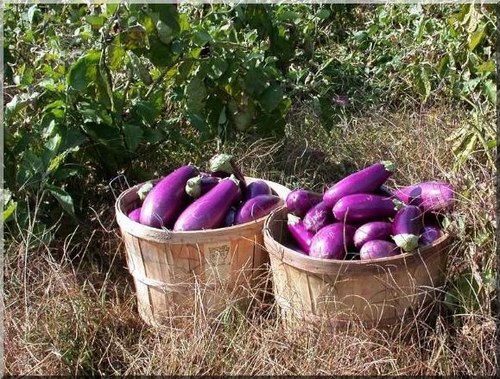
So I guess it is no surprise that I too am a believer of organic vegetable gardening. However, even if it were not in my blood, I can't think of any reason why you wouldn't want to grow organic food, or have a beautiful organic garden perfectly safe for good insects to visit, as well as being safe for your family.
Hundreds of years ago, everything was grown organically. No one grew mono-cultures, there was a balance in nature. The good insects ate the bad insects, and companion planting took care of the rest. Some crop loss was expected and tomatoes off the vine didn't have to be the same size and shape.
It was only our greed for more crops per acre that resulted in the use of artificial fertilizers. Suddenly, the balance of nature, was thrown out of kilter. These artificial fertilizers and the practice of growing mono-cultures caused an increase of damaging insects that then called for damaging chemical pesticides. And as the insects grew more resistant to the chemicals so the chemicals to fight these pests became more and more poisonous.
Instead she had a beautiful, well-planned garden that drew people from far and wide, and her exquisite roses and orchids were her pride and joy. She was a great advocate of natural methods in producing those beautiful blooms, especially with the use of seaweed and barnyard manure. As an adult, and a mother myself, she had me traipsing around with her on the neighbor's dairy farm picking up cow manure to put around her roses.
But it was my great-grandmother, who was the true organic gardener of the family. She always had a brace of freshly trapped hares hanging up in her pantry. Her pantry shelves were lined with the summer's bountiful harvest, sitting snugly in their glass jars. The chickens in the backyard were kept for eggs as well as the pot and which she killed and butchered herself. She grew prize-winning organically grown vegetables, from the many fruit trees she made jams and jellies, she was a wonderful baker, and a staunch believer in organic gardening.

So I guess it is no surprise that I too am a believer of organic vegetable gardening. However, even if it were not in my blood, I can't think of any reason why you wouldn't want to grow organic food, or have a beautiful organic garden perfectly safe for good insects to visit, as well as being safe for your family.
Hundreds of years ago, everything was grown organically. No one grew mono-cultures, there was a balance in nature. The good insects ate the bad insects, and companion planting took care of the rest. Some crop loss was expected and tomatoes off the vine didn't have to be the same size and shape.
It was only our greed for more crops per acre that resulted in the use of artificial fertilizers. Suddenly, the balance of nature, was thrown out of kilter. These artificial fertilizers and the practice of growing mono-cultures caused an increase of damaging insects that then called for damaging chemical pesticides. And as the insects grew more resistant to the chemicals so the chemicals to fight these pests became more and more poisonous.
Organic Gardening Tips
The Beginning of Organic Gardening
So you
want to start a
garden? Well, it is not as daunting as it sounds, nor is it difficult
to look after, once it is established. But having a beautiful
garden is the reward for constant care and nuturing. The more you look
after your garden, the better it will bloom and produce for you.
However, if you neglect your garden, in no time at all plants will weaken, insects and disease will take over, and so will the weeds. Soon your garden will become an unsightly jungle. So once you start a garden, there is a certain level of commitment to keep it in good condition.
So why can't you just have a garden and use poisons and sprays to keep the insects and weeds at bay? Well, first of all it is irresponsible to garden that way. You are killing both good and bad insects indiscriminately. You are endangering your health and the eco-system at large. There are alternative methods to fighting pests and plant disease that are no more expensive, some so ridulously easy and cheap, you can make them in your kitchen.
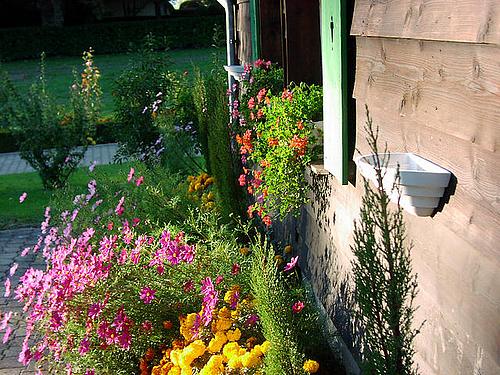
The type of garden
design you choose will really determine how much work and time you
garden will need to look good. Some people prefer having an easy
garden to look after. This is often a garden that is filled with native
plants from the area and therefore grow well with little fuss.
Others, and I am one of those, are more foolhardy and like the cottage garden design that needs a lot of fuss and attention because most of the plants are annuals that need constantly replacing or plants that are not native to the area and therefore need lots of coaxing to do well.
However, even in a cottage garden the backbone of any bed are hardy perennials that will last during a tough winter. Hardy perennials cover trees, shrubs and herbs that will grow for several seasons. Trees, of course grow over a longer period of time.
One word of warning about planting trees in a garden.
Those small little saplings soon grow into big trees. Know both the height and spreading width of the trees you are planning to use. Make sure that their mature size, is not too big for the area chosen.
Never plant trees too close to a house, particularly oak trees as their root system can be extensive in search for moisture and can do a lot of damage to house foundations in the future.
Whatever garden design you choose, again, like house decorating, will be a reflection of you and your personality and should match the architecture of your home in order for the home and garden to have a cohesive look.
However, if you neglect your garden, in no time at all plants will weaken, insects and disease will take over, and so will the weeds. Soon your garden will become an unsightly jungle. So once you start a garden, there is a certain level of commitment to keep it in good condition.
So why can't you just have a garden and use poisons and sprays to keep the insects and weeds at bay? Well, first of all it is irresponsible to garden that way. You are killing both good and bad insects indiscriminately. You are endangering your health and the eco-system at large. There are alternative methods to fighting pests and plant disease that are no more expensive, some so ridulously easy and cheap, you can make them in your kitchen.
What is Organic Gardening?
- You need to work with nature, not against it
- You need to honor and practise diversity of nature
- Be a custodian to the native plants and animals in your garden
- Return to the soil what you take out of it
- Feed the soil, rather than the plant
- See nature as something that is holistic and
symbiotic
rather than items working in isolation
Garden Design

Pretty
annuals in full bloom
Others, and I am one of those, are more foolhardy and like the cottage garden design that needs a lot of fuss and attention because most of the plants are annuals that need constantly replacing or plants that are not native to the area and therefore need lots of coaxing to do well.
However, even in a cottage garden the backbone of any bed are hardy perennials that will last during a tough winter. Hardy perennials cover trees, shrubs and herbs that will grow for several seasons. Trees, of course grow over a longer period of time.
One word of warning about planting trees in a garden.
Those small little saplings soon grow into big trees. Know both the height and spreading width of the trees you are planning to use. Make sure that their mature size, is not too big for the area chosen.
Never plant trees too close to a house, particularly oak trees as their root system can be extensive in search for moisture and can do a lot of damage to house foundations in the future.
Whatever garden design you choose, again, like house decorating, will be a reflection of you and your personality and should match the architecture of your home in order for the home and garden to have a cohesive look.
Organic Gardening and Garden Soil
First of
all, the
biggest gardening tip I can give you is that if you don't have good
garden
soil, you will never have a beautiful garden. This is the food for your
garden and you need to make sure that you have just the right balance
of nutrients in the soil to produce good, strong plants.
Just because you are growing an organic garden, doesn't mean that you don't have to do anything to condition the soil. If you continue to take from the soil season after season, and put nothing back in the form of compost and manure eventually, your plants will grow smaller and weaker, get diseased and lots of pests... Sound familiar?
You also need to know the type of soil you have. If it is clay, you need to add lime. If it is sandy, you need to add organic matter. And you can add too much compost and barnyard manure, so beware. However, whenever I am planting new flowers, shrubs, trees or vegetables in my garden I always add a good handful or two of manure to the holes, followed by a small handful of lime, dolomite and blood and bone.
If you are preparing a new area for annuals or vegetables, place about 1 inch of compost on the area you are going to plant as well as broadcasting with a good homemade fertilizer. You can see the recipe below.
You also need to know the pH of your garden soil. Some plants are acid loving, while others are alkali loving. Test your soil, and know which type of soil you have. Don't fight against nature. Plant according to your pH and you will get good results. Most plants do well within the 6.0 - 7.0 range.
Your soil should be friable, loamy and have good drainage. A lot of plants don't like "wet feet". If you have a problem with soil that is waterlogged, either create a garden with bog plants and similar water loving plants, or do something about the soil.
However, the cheaper option is definitely the planting out of plants that will thrive in such an environment. Putting in drainage pipes and gravel for drainage is very costly. The only drawback of not putting in any drainage is that you would be very limited in the type of vegetables that you would be able to grow in soil like this.
Making compost at home is the most economical way of using up grass clippings, soft prunings, household scraps and even vacuum cleaner debris, and improving the quality of your garden soil at the same time! We show you that making a compost bin isn't that difficult as well as how to make compost in a very short space of time.
Finally, if you have a country home, you will need to protect your garden from animals such as dogs, deer, rabbits etc. If you cannot protect your flower garden at least put a fence around your vegetable garden.
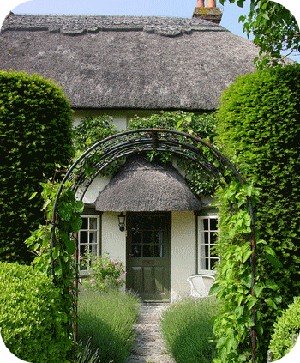
Growing native plants of the area are always a safe bet. These are hardy, usually are not attacked as much by garden pests, and in a drought are fairly resistant to a sudden lack of water.
If you are not going to grow native species in your organic gardens and want to create a garden filled with exotic plants, expect a lot of hard work, and a certain amount of failure.
Organic
Gardening Seeds
If
you are serious about organic gardening, you will need to buy open
pollinated seeds for vegetables that are untreated, as well as
untreated seeds for annuals and other plants.
Old fashioned, open-pollinated seeds will allow you to save the heirloom seeds from one harvest to the next.
Many of you may not be aware that your seeds are often chemically treated by the seeds companies to retard disease and to keep the seeds viable for longer.
If you use these chemically treated seeds you are not growing organic vegetables. Heirloom seeds or untreated, open-pollinated seeds are the only seeds you should be buying if you are a serious organic gardener.
For the very best homemade organic feeder you can get is the following recipe, which isn't ours, but belongs to a gentleman from Australia, but which worked for him for more than 30 years as well as for us and others. So we share this with you now.
1 part blood and bone, or meat meal
1/4 part agricultural lime, finely ground
1/4 part gypsum (If you can't get gypsum double the quantity of the lime)
1/2 part dolomite
1 part either rock phosphate, kelp meal or bone meal
For those of you who don't know what seed meal is, it is what is left behind after either linseed, sunflowers or canola seed (rape) has been pressed to get the oil out. It is mainly used in animal feed, so if you go down to the rural outlet you can pick it up there. If you have an oil extraction factory on your doorstep, then you won't have to go too far to find it.
In order to make your homemade organic plant feed you can mix the whole lot in a 20 quart container, using a 1 quart bottle as a measure for the parts. This recipe is based on volume, not weight, and it doesn't have to be very accurate to work.
The seed meal and lime on its own will grow an excellent organic garden. These are really our main 2 ingredients that are essential to this recipe. Blood and bone is easy to find, as is dolomite. For the rest of the ingredients, if you can't find them, don't stress. Just find whatever else you can, it will be enough, as long as you have the first 3 ingredients your gardens will flourish.
Seed meal is stable and will keep for years, as long as it is stored in a dry container. Blood and bone, also called tankage is originally from abattoirs however, you can also find this now at your gardening stores. Bone meal you can pick up from your butchers.
Agricultural lime, gypsum and dolomite are 3 different limes some with calcium only, some with magnesium as well, but these are the 3 limes to use when organic gardening. Do not use any hot limes such as quicklime or burnt lime.
Finally, if you can't find kelp meal, which, when you do, you may find very expensive, you can foliar feed your plants with a seaweed/ kelp liquid such as Seasol or something similar.
I use Seasol on my vegetable plants every 2 weeks during the growing period which allows me up close and personal with the plants and I can see if there are any insects I need to control, or possible stress in the plants that needs addressing.
This garden fertilizer is ideal for all low demanding plants and vegetables such as carrots, beans, beets, parsley, peas etc. However, if you are growing roses and tomatoes which are both heavy feeders then you will need to apply a side dressing. Apply moderately a little away from the root system every 3 to for weeks. In a growing season, never apply more than another 4-6 quarts as a side dressing, per 100 square feet.
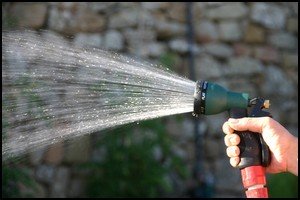 If you live in a hot climate
you should think about mulching your
plants to not only keep the weeds down but to retain as much water in
the soil as possible.
If you live in a hot climate
you should think about mulching your
plants to not only keep the weeds down but to retain as much water in
the soil as possible.
Mulching slows down the need for watering, and also minimizes the stress that plants endure in harsh climates.
Some plants never recover from periods of no water and so you need to make sure that your plants receive regular watering.
However, over watering is just as bad as under watering. If you are not sure when to water your garden test the soil. If your fingers feel damp when you stick them into the soil around the plants hold off for another day. If not, then water.
It is better to deep water several times a week rather than to shallow water everyday. This is because when deep watering you are encouraging the plants to grow larger roots allowing them to seek the much needed nutrients in the soil, rather than to develop shallow roots and then run out of nutrients.
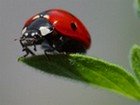 Pest control is the major problem when
gardening. One day your roses
are fine, and the next day you have aphids all over the buds and stems.
What do you do?
Pest control is the major problem when
gardening. One day your roses
are fine, and the next day you have aphids all over the buds and stems.
What do you do?
So many of us have reached for the latest and greatest commercial pest control products that have indescriminately destroyed good bugs along with the bad, have poisoned our waterways and rivers and can still be found in our soils decades after some of these insecticides and pesticides have long been banned and taken off the shelves.
For the organic gardener, we look to see how we can minimize the effects of garden pests. First of all we need to identify garden pests that are around, and then look for solutions. These can be through a number of ways:
However, you can read up on each of them and decide for yourself. This list is certainly not exhaustive, but gives you an idea that there is a lot of scope when gardening, which really is part of the fun, isn't it. You can be a total gardening rebel and no one will give a damn!
Gardening by Moon Planting
Permaculture
Biodynamics
Enjoy your gardening. I find my garden a place where I can escape to when things get too much sometimes. I find weeding very theraputic and love to sit of an evening time and enjoying the perfumes, the blooms and the beauty of my labors. I am sure that your garden will bring you as much joy too!
Just because you are growing an organic garden, doesn't mean that you don't have to do anything to condition the soil. If you continue to take from the soil season after season, and put nothing back in the form of compost and manure eventually, your plants will grow smaller and weaker, get diseased and lots of pests... Sound familiar?
You also need to know the type of soil you have. If it is clay, you need to add lime. If it is sandy, you need to add organic matter. And you can add too much compost and barnyard manure, so beware. However, whenever I am planting new flowers, shrubs, trees or vegetables in my garden I always add a good handful or two of manure to the holes, followed by a small handful of lime, dolomite and blood and bone.
If you are preparing a new area for annuals or vegetables, place about 1 inch of compost on the area you are going to plant as well as broadcasting with a good homemade fertilizer. You can see the recipe below.
You also need to know the pH of your garden soil. Some plants are acid loving, while others are alkali loving. Test your soil, and know which type of soil you have. Don't fight against nature. Plant according to your pH and you will get good results. Most plants do well within the 6.0 - 7.0 range.
Your soil should be friable, loamy and have good drainage. A lot of plants don't like "wet feet". If you have a problem with soil that is waterlogged, either create a garden with bog plants and similar water loving plants, or do something about the soil.
However, the cheaper option is definitely the planting out of plants that will thrive in such an environment. Putting in drainage pipes and gravel for drainage is very costly. The only drawback of not putting in any drainage is that you would be very limited in the type of vegetables that you would be able to grow in soil like this.
Making compost at home is the most economical way of using up grass clippings, soft prunings, household scraps and even vacuum cleaner debris, and improving the quality of your garden soil at the same time! We show you that making a compost bin isn't that difficult as well as how to make compost in a very short space of time.
Finally, if you have a country home, you will need to protect your garden from animals such as dogs, deer, rabbits etc. If you cannot protect your flower garden at least put a fence around your vegetable garden.
Organic Gardening with Plants

Know your Gardening Zones
Know what grows well in your area. There is not point in growing outdoor orchids in Michigan or tulips in Florida. You will only end up with a lot of heartache. Know your gardening zones and when it is safe to plant out your seedlings after the last frosts have passed.Growing native plants of the area are always a safe bet. These are hardy, usually are not attacked as much by garden pests, and in a drought are fairly resistant to a sudden lack of water.
If you are not going to grow native species in your organic gardens and want to create a garden filled with exotic plants, expect a lot of hard work, and a certain amount of failure.
Organic
Gardening Seeds
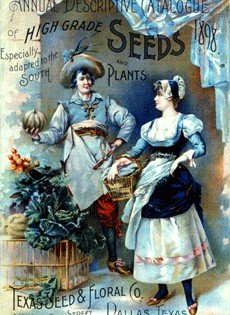
If
you are serious about organic gardening, you will need to buy open
pollinated seeds for vegetables that are untreated, as well as
untreated seeds for annuals and other plants. Old fashioned, open-pollinated seeds will allow you to save the heirloom seeds from one harvest to the next.
Many of you may not be aware that your seeds are often chemically treated by the seeds companies to retard disease and to keep the seeds viable for longer.
If you use these chemically treated seeds you are not growing organic vegetables. Heirloom seeds or untreated, open-pollinated seeds are the only seeds you should be buying if you are a serious organic gardener.
Organic Gardening and Garden Fertilizer for Feeding
In order to grow a beautiful garden you need to feed your plants regularly. This includes foliar feeding, as well as feeding the root system. In order to do this you either have to make or buy some good garden fertilizer.For the very best homemade organic feeder you can get is the following recipe, which isn't ours, but belongs to a gentleman from Australia, but which worked for him for more than 30 years as well as for us and others. So we share this with you now.
Homemade Recipe for Organic Garden Fertilizer
3 parts seed meal1 part blood and bone, or meat meal
1/4 part agricultural lime, finely ground
1/4 part gypsum (If you can't get gypsum double the quantity of the lime)
1/2 part dolomite
1 part either rock phosphate, kelp meal or bone meal
For those of you who don't know what seed meal is, it is what is left behind after either linseed, sunflowers or canola seed (rape) has been pressed to get the oil out. It is mainly used in animal feed, so if you go down to the rural outlet you can pick it up there. If you have an oil extraction factory on your doorstep, then you won't have to go too far to find it.
In order to make your homemade organic plant feed you can mix the whole lot in a 20 quart container, using a 1 quart bottle as a measure for the parts. This recipe is based on volume, not weight, and it doesn't have to be very accurate to work.
The seed meal and lime on its own will grow an excellent organic garden. These are really our main 2 ingredients that are essential to this recipe. Blood and bone is easy to find, as is dolomite. For the rest of the ingredients, if you can't find them, don't stress. Just find whatever else you can, it will be enough, as long as you have the first 3 ingredients your gardens will flourish.
Seed meal is stable and will keep for years, as long as it is stored in a dry container. Blood and bone, also called tankage is originally from abattoirs however, you can also find this now at your gardening stores. Bone meal you can pick up from your butchers.
Agricultural lime, gypsum and dolomite are 3 different limes some with calcium only, some with magnesium as well, but these are the 3 limes to use when organic gardening. Do not use any hot limes such as quicklime or burnt lime.
Finally, if you can't find kelp meal, which, when you do, you may find very expensive, you can foliar feed your plants with a seaweed/ kelp liquid such as Seasol or something similar.
I use Seasol on my vegetable plants every 2 weeks during the growing period which allows me up close and personal with the plants and I can see if there are any insects I need to control, or possible stress in the plants that needs addressing.
How to Use your Homemade Organic Garden Fertilizer
First of all, you need to make sure that your garden soil has been well dug over and mixed with well rotted compost and barnyard manure at least 2 - 3 months before planting. At the same time, add 4 - 6 quarts of homemade fertilizer over 100 square feed of soil. Just lightly hoe into the soil. Let the soil animals do the rest of the work for you.This garden fertilizer is ideal for all low demanding plants and vegetables such as carrots, beans, beets, parsley, peas etc. However, if you are growing roses and tomatoes which are both heavy feeders then you will need to apply a side dressing. Apply moderately a little away from the root system every 3 to for weeks. In a growing season, never apply more than another 4-6 quarts as a side dressing, per 100 square feet.
Organic Gardening and Watering
 If you live in a hot climate
you should think about mulching your
plants to not only keep the weeds down but to retain as much water in
the soil as possible.
If you live in a hot climate
you should think about mulching your
plants to not only keep the weeds down but to retain as much water in
the soil as possible. Mulching slows down the need for watering, and also minimizes the stress that plants endure in harsh climates.
Some plants never recover from periods of no water and so you need to make sure that your plants receive regular watering.
However, over watering is just as bad as under watering. If you are not sure when to water your garden test the soil. If your fingers feel damp when you stick them into the soil around the plants hold off for another day. If not, then water.
It is better to deep water several times a week rather than to shallow water everyday. This is because when deep watering you are encouraging the plants to grow larger roots allowing them to seek the much needed nutrients in the soil, rather than to develop shallow roots and then run out of nutrients.
Organic Gardening and Pest Control
 Pest control is the major problem when
gardening. One day your roses
are fine, and the next day you have aphids all over the buds and stems.
What do you do?
Pest control is the major problem when
gardening. One day your roses
are fine, and the next day you have aphids all over the buds and stems.
What do you do?So many of us have reached for the latest and greatest commercial pest control products that have indescriminately destroyed good bugs along with the bad, have poisoned our waterways and rivers and can still be found in our soils decades after some of these insecticides and pesticides have long been banned and taken off the shelves.
For the organic gardener, we look to see how we can minimize the effects of garden pests. First of all we need to identify garden pests that are around, and then look for solutions. These can be through a number of ways:
- Release good bugs into the garden to eat the bad bugs.
- Plant our gardens in such a way that some plants confuse the bugs. Companion planting is a well known method of insect control.
- Finally, we can look at making our own homemade natural pesticides using ingredients from our kitchens to either kill them, or minimize their numbers.
- Use Neem to combat pests
- Use Quassia for Chewing and Sucking Insects
Different Branches of Organic Gardening
There are many organic gardeners that practise straight organic gardening, and then there are others that are organic gardeners but plant using slightly different methods. I don't see one method better than another. When I garden, I pick and choose from all of them, and so have a very eclectic approach, rather than having a purist point of view.However, you can read up on each of them and decide for yourself. This list is certainly not exhaustive, but gives you an idea that there is a lot of scope when gardening, which really is part of the fun, isn't it. You can be a total gardening rebel and no one will give a damn!
Gardening by Moon Planting
Permaculture
Biodynamics
Enjoy your gardening. I find my garden a place where I can escape to when things get too much sometimes. I find weeding very theraputic and love to sit of an evening time and enjoying the perfumes, the blooms and the beauty of my labors. I am sure that your garden will bring you as much joy too!
Other Gardening Resources that you May be Interested In
- Garden Pests
- Natural Pesticides
- Grow Vegetables
- Cottage Gardens
- Growing Herbs
- Planting and Pruning Fruit Trees
- Gardening Zones
- Winter Gardening
- Spring Gardening Tips
- Spring Planting
- Spring Bulbs
- Backyard Gardening
- Container Gardening
- No Dig Gardening
- Square Foot Gardening
- Straw Bale Gardening
- Companion Planting
- Liquid Fertilizer
- Worm Farming
- Gardening Supplies
Don't miss out on our latest news and articles. Sign up for our free monthly e-zine!
Go from Organic Gardening back to Countryfarm Lifestyles and Homesteading




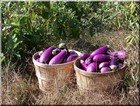
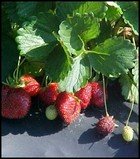

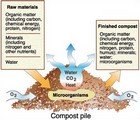


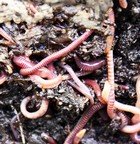
New! Comments
Do you have something of value to add? Leave me a comment in the box below.